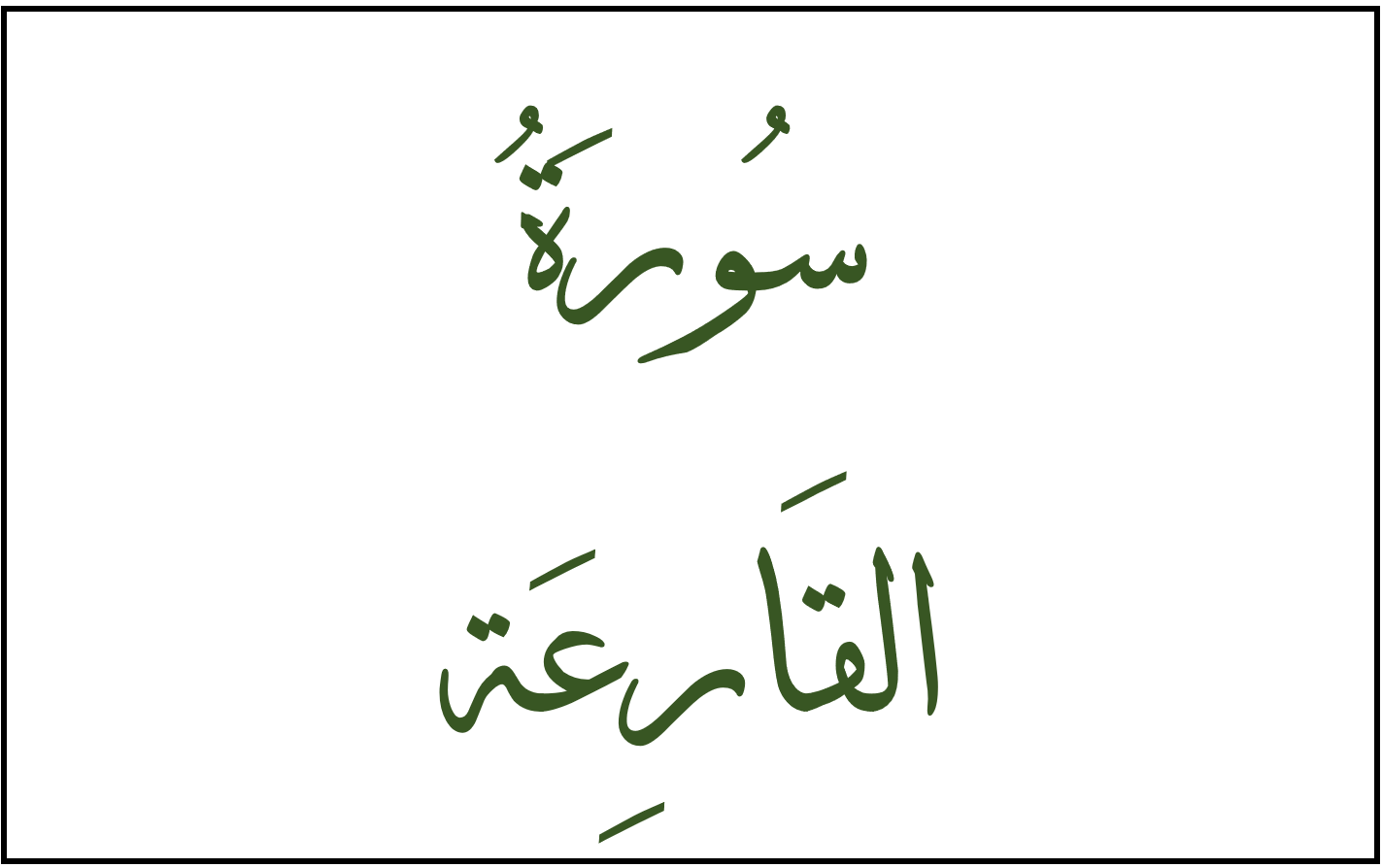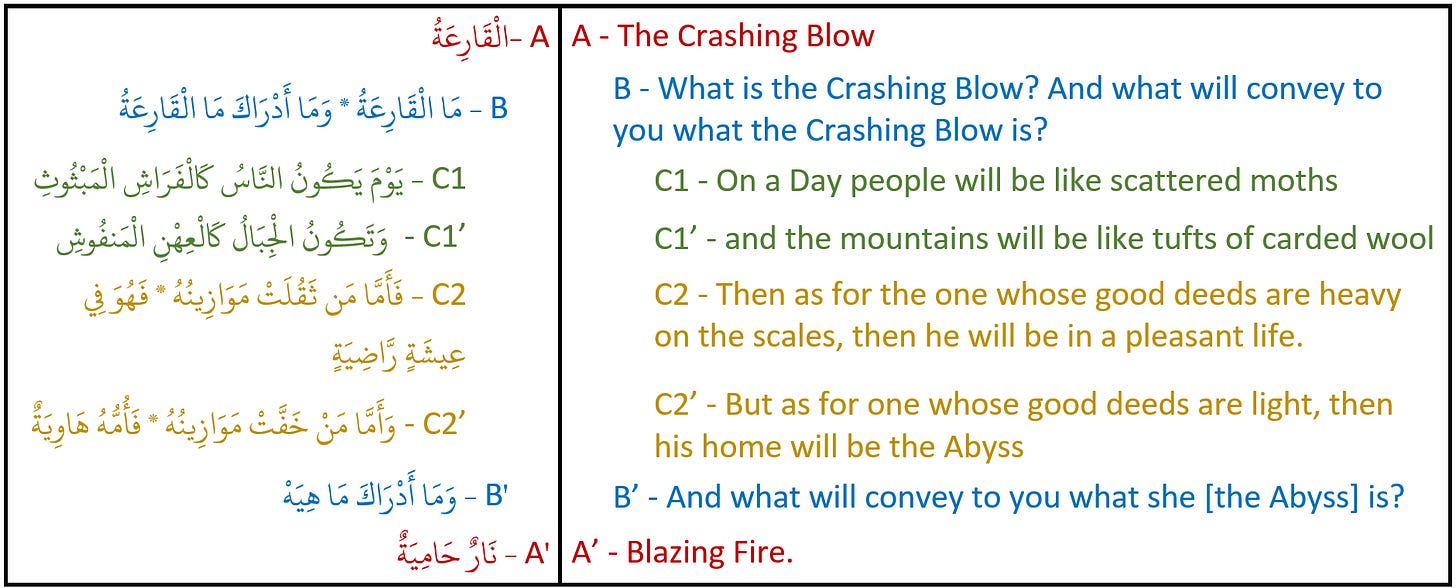Sūrah al-Qāriʿah (The Crashing Blow) is a brief but powerful description of the catastrophic breaking-in of Judgment Day. Its power derives from a combination of mystery and suspense that it invokes, its imagery, its symmetry, and its patterns of sound:
The sūrah is a mirror composition in which the first half (ABC) describes the cosmic upheaval that will occur at the onset of Judgment Day, called al-Qāriʿah, while the second half (C’B’A’) describes the outcome of the Judgment. Both of these descriptions are incomplete, suggesting that words alone can convey only a small glimpse of these realities. The very name al-Qāriʿah also carries a frightening air of vagueness: it is capable of various possible translations, including “the Crashing Blow,” “the Calamity,” and “the Crushing.”
The sūrah is framed by two isolated terms: A, “The Crashing Blow” (al-Qāriʿah) and A’, “Blazing fire” (nārun ḥāmiyah). The former, as we have noted, alludes to the cosmic upheaval of Judgment Day, while the latter alludes to Hell. Their relationship as manifestations of divine judgment is underscored not only by their placement across from each other on the mirror, but also by their rhyme, (qāriʿah/ḥāmiyah).
B and B’ both pose the question, “What will convey to you what X is?”, the former about “the Crashing Blow” and the latter about “the Abyss.” Again, the answers that follow only offer warnings and shy of attempting to convey a full grasp of these realities.
At the core of the sūrah are C and C’, each containing a parallelism:
C consists of two parallel similes that offer a partial glimpse of “the Crushing Blow” of Judgment Day, one comparing the people on that Day to scattered moths and the other likening the mountains, apparently the most stable objects in nature, to tufts of wool being torn from their roots.
C’ concerns the outcome of the Judgment, containing two parallel but contrasting portraits of the fates of the righteous and the condemned. In accordance with the overall tenor of the sūrah, the fate of the righteous is described vaguely, but assuredly, as “a pleasant life,” while the “home” of the condemned is referred to even more enigmatically as “the Abyss,” evoking a sense of both mystery and despair. This sense of despair is heightened by a second, underlying image: the word used here for “home,” Umm, literally means “mother” and the word for the “Abyss,” hāwiyah, also denotes a woman bereft of her child. The sense of mystery concerning what “the Abyss” is becomes heightened (B’) and then only partially resolved - but the sense of anguish intensified - by its characterization as (or comparison to) “blazing fire” (A’).
Altogether, the sūrah may be presented as so:
وَاللَّهُ أَعلَمُ - And Allah knows best
Sources
This is paraphrased from Michel Cuypers, “Semitic Rhetoric as a Key to the Question of the Naẓm of the Qur’anic Text,” Coherence in the Qur’an 13.1 (2011): 7-9
Ali Khan, Nouman and Sharif Randhawa. Divine Speech: Exploring the Quran as Literature. Bayyinah Institute, 2016.






